Arthur Catherall was born in Bolton in Lancashire on February 6th, 1906. In 1936 he married Elizabeth Benson and they had one son and one daughter. From 1940-1945 he served in the R.A.F. and is also known to have worked in the cotton-spinning industry before becoming a free-lance writer. During the Second World War he saw service in Eastern Bengal and Burma and he also travelled widely in Europe, Africa and the Far East.
He had a detailed knowledge not only of the tropics but had also crossed Lapland from the Russian border to the Norwegian Coast. In addition he made voyages in British trawlers to the fishing grounds off the coast of Iceland and had experienced the terrors of the notorious black frost. He was always concerned that the boys who read his books would should quickly realise that he "knew his stuff". He disliked unnecessary violence and, whilst maintaining dramatic tension, always tried to avoid physical attacks as the means of resolving conflicts in his stories. Amongst his hobbies were mountain climbing, camping and sailing and, of course, travelling.
Arthur Catherall died on the 6th January, 1980.
By the time of "Cave of the Cormorant" (1973) his publishers, J.M. Dent and Sons, were claiming that sales of his books totalled over one million copies. He also won critical acclaim with books like "The Strange Intruder" gaining the Child Study Association Book of the Year for 1965. In the U.S.A., where his books were mostly published by Lothrop, Lee and Shepard, he was winner of the American Junior Literary Guild Award on three occasions. A list of his publications is recorded here but the reviews that follow can only give a sample of his work.
Tales from the South China Seas
The "Bulldog" stories
The stories in the "Bulldog" series are all about battles of wits between a two groups of characters who crop up regularly in nearly all of the books. The main setting is the South China Seas for the tugboat "Bulldog" has the Lion City of Singapore as its home harbour. The scene is set by the first of the books "Ten Fathoms Deep" in which seventeen year old Jack Frodsham comes out east to start his career as a salvage man on board his father's 500 ton tugboat. Within a day Jack's father has been the victim of a knife attack and is lying seriously ill in Singapore's General Hospital.
All the responsibility for the welfare of the tugboat and her crew now falls largely on Jack's young shoulders. His ally is Husky Hudson, the mate of a ship that has been recently scuttled by an unscrupulous criminal who will stop at nothing to get his way. Their first job is raise the sunken ship and get it back safely to Singapore. In all the books that follow Jack and Husky are thrown into dangerous situations, some created by the weather, by the treacherous shoal waters and the dangerous creatures that live under the sea. Most of the worst danger, however, comes from the ruthless men that set out to thwart our heroes' plans and to line their own pockets. As each book ends the bitterness increases as the three main villains fail to get the upper hand again and again. Somehow the honesty, decency and courage of Jack and Husky always wins through in spite of the deviousness, brutality and outright evil of their opponents.
The criminal mastermind behind the swindles, thefts and murders is called Karmy. In the very early adventures he is there in the background prodding his henchmen into more and more vicious assaults on the crew of the Bulldog and any innocent parties who cross his path. Details of his identity are kept deliberately minimal but the reader soon begins to know that the enigmatic "man with the blue tinted glasses" is little short of the devil himself. By the time of "Forgotten Submarine" he has revealed one of his special qualities. This is the ability to assume a new identity and to fool even his eldest enemies by his disguise. His criminal associates soon begin to understand that no matter what is written on paper nor what deal is struck, his speciality is the Double-cross.
Most of the time the day-to-day skull-duggery is carried out by two contrasting captains called Hardacree and Gawse. Neither man is exactly pleasant but Catherall cleverly depicts them as entirely different in nature. Captain Gawse of the tug "Thunderbolt" is a first-rate seaman whose attacks on Jack Frodsham and Husky Hudson are motivated by the fear he feels about Karmy. Some illegal and ignoble activity from the past has placed him into his boss's hands and he winces with fear when the pressure is put on. At some point earlier in his life Jack's father had done Gawse a good turn. This has the curious twin effect of making him resent the obligation he has been put under and of him trying to avoid doing Jack any real physical harm. This minor mitigating factor in his character is always swept away by the need to save his own skin and the terror that Karmy can conjure up with just a few threats. Even a spell in prison has not convinced him of the error of his ways. His appearance suggests his continual state of misery and Apprehension.
"His companion was tall and lean. There was a slight stoop to his shoulders, and his beaky nose somehow gave him a woebegone expression, as if her were perpetually unhappy."
Captain Hardacree of the "Rosemary G" looks and behaves entirely differently.
"The man who greeted the water-carriers was short and barrel-chested, with an out-jutting, unshaven jaw and small eyes. He wore a shabby sea-captain's hat on the back of his head, and his drill slacks and tunic were equally shabby."
Hardacree has no room in his personality for compromise or civility. Practically every utterance he makes is a sneer or a shout. He has no qualms about resorting to murder at the first opportunity. Karmy's hold over the bully Hardacree appear to be the one brought about by sheer greed for profit and his desire for revenge over Jack and Husky. Whilst Gawse will always run away from trouble Hardacree will always race towards it. Hardacree's efforts are sometimes marred by the fact that he runs a sloppy ship and his seamanship lags behind that of Gawse.
The interaction of all these characters is at the core of each of the stories. Nevertheless the success of the series depends far more on two ingredients that have not been mentioned so far. The first of these is the authenticity of both the settings and the technical details. Without being overwhelming tedious in his descriptions Catherall manages to conjure the flavour of each of the locations he uses. Moreover he can show the reader these places as his characters sweat to the point of exhaustion under the torrid heat or struggle for air in the breath-taking force of a tropical monsoon.
Many of the plot-lines are about the techniques of underwater salvage and a lot of the time is concerned with the activities of men in diving suits. By its very nature, diving to the ocean floor or to sunken wrecks always involves a time limit – the moment at which the compressed air or the oxygen runs out. Catherall is a master at exploiting the variety of hazards that can push a person engaged in underwater exploration to the point of extinction.
It is here also that we find that other ingredient that marks out Catherall as an author who it is worth remembering. Constantly, throughout each tale, the reader is exposed to the behaviour of men from several different races. As Jack operates in this subterranean world his fellow divers are usually Malayan or Chinese and again and again we see examples of their courage, loyalty, endurance and dignity. The bond between Jack and Ahmat, the Malayan mate of the Bulldog, is tremendously strong and each is ready to sacrifice his life for the other. One of the most memorable moments in the whole saga comes in "Forgotten Submarine" where common humanity will not allow Jack and Ahmat to abandon Tanaka, the crafty Japanese submarine commander, when he is trapped inside his old command with little hope of survival. He may have been their enemy but he is still a man- like themselves.
It is strange to note that overall the balance in the stories is tilted towards evil with three English badmen – Karmy, Hardacree and Gawse generally outweighing the goodness of Jack and Husky. It is only because of their affinity with the resourceful and brave Malayans and the Chinese that our two heroes are able to pull through. The mutual respect and teamwork shown by the good people of all races is what ultimately sticks in the memory. Even Tanaka undergoes a partial conversion and shows his gratitude both in the form of tangible rewards and his statement of admiration for the men who have saved his life. A mere ten years have passed since the end of the Second World War and Catherall is encouraging his readers to look beyond the stereotypical picture of old enemies and to go forward in a spirit of reconciliation.
Overall it is fair to say that the "Bulldog" stories are amongst some of the most accomplished that Catherall ever wrote, demonstrating some of the best features of his writing. Only in one respect could the author be considered fortunate. This was with the choice of Geoffrey Whittam to do the illustrations. Just as with his sketches for a large number of Monica Edwards' stories the artist's drawing match the author's descriptions of people and events both seamlessly and consistently.
Arthur Catherall “Bulldog” / Husky Hudson stories
1. Ten Fathoms Deep 1954
2. Jackals of the Sea 1955
3. Forgotten Submarine 1956
4. Java Sea Duel 1957
5. Sea Wolves 1959
6. Dangerous Cargo 1960
7. China Sea Jigsaw 1962
8. Prisoners Under the Sea 1963
9. Tanker Trap 1965
10. Death of an Oil Rig 1967
11. Island of Forgotten Men 1968
Wartime Stories "The Fighting Four" by Arthur Catherall as A.R. Channel
The biggest clue to the nature of this series about the exploits of four British soldiers during World War II was provided when I found the "Collins Annual" for 1959. For there appeared the adventures of the same four individuals but in comic strip form ! Indeed one can sum up the rather basic appeal by saying, "Action and Action and More Action".
The characters of the four leading protagonists are only given very basic delineation. There are a few tricks of speech and some set patterns of behaviour. Sergeant Edward Harris is always brave, resourceful and full of unexpected tricks. His comrades share the same qualities and enjoy a friendly bantering relationship with their leader. When he is "one of them" he allows them to call him "Ted" but other times he is constantly reminding Curly Bates ("tough little Yorkshireman"), Sam Foster (youngest of the four Commandos) and China Brown (explosives expert) that he is to be known as "Sergeant Harris" to the likes of them. Inevitably Curly is called "Curly" because he is practically bald and the others joke that he has to pay his barber twice as much because he has to organise search parties.
They are meant to be both ordinary and extraordinary soldiers. Their background is resolutely working class and their enjoyments are presented as consuming food, drink and fags. On the other hand they are men of low cunning and high courage. Nothing daunts them even when the situations seem hopeless. They are Commandos and later members of the S.A.S. They treat their officers with respect which is more than can be said for the author. In fact Mr. Catherall quite often seems to introduce officers merely so that they can get injured and become a drag on the "Fighting Four". In "The Tunnel Busters" their officer doesn't even manage to get off the aeroplane taking them to enemy-occupied territory before receiving a wound that puts him out of action. Naturally we know that these comrades will always survive until the end of the story.
They will pick up wounds along the way but fatalities are not for them.
The enemy suffer heavy casualties but Catherall's concentration is on destruction of materials rather than human beings. The enemy also remain mostly anonymous but when confronted prove to have a genuine range of emotions and characteristics. One thinks particularly of the Italian doctor in the desert story of "The Forgotten Patrol" who operates on the wounded British officer (yes, another officer hazard for our heroes) whilst bombs are falling all around him. Other hostile individuals declare that they would like to meet the four again when the war is over. In spite of the introduction of such serious issues as reprisal killings and the effect of traitors, the books skirt around the real horrors of war. Moral choices do have to be made and, to their credit, Sergeant Harris and his comrades sometimes place the survival of their allies above the completion of their mission. It is sheer wish fulfilment when circumstances are wrested in their favour and they can save lives as well as destroy the enemy munitions and equipment.
It is fair to say that the author in this series can be given full marks for ingenuity and technical expertise but the solid characterisation and genuine humanity of the "Bulldog" stories is almost completely lacking. A comparison with W.E.Johns "Gimlet" stories about a very different group of Commandos would also reveal that Catherall does not match the achievement of the author of "Biggles" in his treatment of this aspect of World War II.
The Fighting Four (1959 ?)
The first adventure lays down the pattern for most of the subsequent ones. The four Commandos are a part of a raid on a hydro-electric power plant in occupied Norway. Things really only start to go wrong after the mission has been successfully completed and they have to make their way back to the coast in order to be picked up by the submarine that will take them back to Britain. In order to throw off their pursuers they resort to all sorts of unexpected manoeuvres and pieces of double bluff. In spite of standing orders which declare that wounded will be left behind three of the Four refuse to leave their injured comrade and start a series of diversions to draw attention away from the Norwegian doctor's house where he is slowly recovering. A favourite device of Catherall is to involve a train in his adventure and this book proves to be no exception. To the author's credit it has to be said that his display of technical detail is just as credible as his insistence on the continuing survival of his heroes is implausible.
The Tunnel Busters (1960)
The tunnel in question is a railway one which runs between France and Italy. By this stage of the war the Allies are fighting their way up through Italy and are being bogged down by the Germans near Monte Cassino. It is vital that one of the main routes for munitions and other supplies be put out of action. On this occasion the Fighting Four are to work in collaboration with the Maquis or French Resistance. Unfortunately "collaboration" proves to an appropriate word for the every action of Ted, China, Curly and Sam is reported to the Germans by a traitor amongst the local villagers. In contrast other French partisans, both young and old, behave with exemplary courage. The climax involves a train full of explosives, a whole village held as hostages, a fanatical Gestapo officer and one small boy and his dog.
Operation V2 (1961)
Again it is a submarine that delivers our heroes to the target area. Again the rest of the raiding party is driven off and unable to land so that the full responsibility for success falls upon Ted and his three comrades. The title tells you all need to know about the mission that they are engaged in. The rocket range at Peenemunde has to be destroyed and the scientist with the knowledge to build the V2 rocket and guide it to fall on London has to be taken to England along with his family. The youngest of the patrol, the slow-thinking but persistent Sam, proves to be full of determination and, once again, the Fighting Four come through successfully.
The Forgotten Patrol (1962)
The desert of North Africa proves to be the arena for the next Fighting Four adventure. They are now members of the Long Range Desert Group and suddenly find themselves asked to help out the S.A.S. in a raid on a German airfield. In spite of the success which brings about large-scale destruction of German aeroplanes the end of the raid provides a series of unexpected hitches and dangers. Their officer is wounded and the Four are told to try to make their own way back to British lines. Amongst their adventures on the way they manage to persuade an entire Italian garrison to surrender to them by a piece of formidable bluff. In addition they trick Italian headquarters into sending out a doctor to treat their wounded Major. The blurb on the dust-jacket of this book declares that "Mr. Channel (Catherall) was familiar with North Africa even before the war". This is confirmed by his convincing description of wadis, lonely military roads, the effects of the sun and the perfidious nature of the sand. The miraculous survival of all four amidst the mayhem they create has by now become an unsurprising feature of the plot.
Mission Accomplished (1964)
The last recorded adventure of the "Fighting Four" is set in Yugoslavia as things begin to fall apart for the Germans. An act of treachery by a self-centred group of partisans means that once again the Fighting Four are left stranded to carry out a mission that was meant to be tackled by a much larger party. A young orphan boy saves their lives and embarks with them on adventure which is centred around the railroad. Explosions, collapsing viaducts and a runaway train are all handled with Catherall's usual deftness and expertise. However, the book ends rather abruptly and a quick check reveals that it is only 155 pages long which is 33 pages shorter than all the other four adventures which bring the "boys" safely home on page 188 exactly. Clearly, having got them back safely one more time, Catherall (or his publishers) decided that "for you – the war is over !"
Some Scout Stories by Arthur Catherall
Two books by Arthur Catherall provide us with a sample of how he could take us into the world of the Boy Scout as envisaged back in the 1940s and 1950s. "The Bull Patrol" (1949) and "Adventurers Limited" (1954) contain stories which are all set in a set of territory loosely called "The North of England". Most of the time the precise position of the locations is carefully omitted, though it takes little imagination to see that many of the boys' adventures are meant to happen in Lakeland.
In each book the basic premise is that a group of boys get together to form a scout patrol. The boys in "The Bull Patrol" get together after a period of hostility caused by a dispute over a camping place. The lone scout, Jim Barnes, convinces four others to join in him a special patrol after they have shared in an exciting encounter with a bad-tempered bull and an equally bad-tempered farmer. The other stories in the book take the boys into many different sorts of escapades with the leading characters being varied as Catherall brings out the different personalities of each of the members. Two or the themes that keep making their appearance are those of courage and honesty. There is also a constant allusion to the difficulties of recognising the narrow line between bravery, inventiveness and adventure, and foolhardiness and lack of care for others. Also, intriguingly, the writer likes to spring surprises which are based around the fact that it is not always a good idea to be convinced by outside appearances.
Above all each scout is made to feel that he is always not just an individual but a representative of the Scout movement whose reputation for helpfulness and honesty must be maintained. In "The Bull Patrol" this is first illustrated by Gyp McGregor who funks a night-time rescue mission into a swampy area of moorland. He improvises an excuse to stay in camp but then discovers a far greater danger. The man who had feigned exhaustion and sent the rest of the scouts on a bogus rescue mission turns out to be the leader of a gang of organised sheep-stealers. Gyp finds his anger brings him the courage he needs and he rises to the challenge of stopping the criminals getting away with their latest venture.
One adventure concerns the rescue of individuals from a storm-swollen river but the River Wen could be anywhere in the "mysterious north". However, the last story in the book "Paying the Piper", brings together two Lakeland themes that we find elsewhere in children's literature. The first concerns hunting. Dick Henshaw is left on his own whilst the rest of the patrol depart to find more materials to rebuild the bridge on Farmer Birkett's land. A fox which is being pursued by the hounds arrives at the river bank to find his usual route to safety has gone. Dick, taking pity, makes up his mind to put a temporary structure in place and to remove it again before the hounds can catch up. The fox scuttles across to freedom and very soon the hounds arrive to be frustrated. Dick meanwhile has hidden himself but the rest of the patrol arrive to receive the anger of the frustrated huntsmen. The denials of his comrades are dismissed as lies as the hounds discover the scent of the escaped fox on the temporary bridge structure. As the master of the hunt says,
"I don't mind your being kind to animals…but I do hate a liar."
Unwittingly Dick has plunged the reputation of the local scouts to an all-time low. The Bull Patrol is to be reported to the local Scout Commissioner as a rotten one. The second Lakeland idea emerges when Dick and the patrol redeem themselves by how they behave when a small aeroplane drops out of the sky onto a lonely farm. In particular their actions reverse the opinion of the master of the hunt who has suddenly realised himself the courage it takes to "face the music".
The plane crash on the high fells is a narrative device that Catherall uses again in "Adventurers Limited" and also under his pseudonym, Linda Peters, in the title "Adventure in Brackendale".
"Adventurers Limited" differs from "The Bull Patrol" in that the group of scouts is more experienced and their object in life is to set out to find more challenges including competitions with other local scout groups. Again the territory is the north of England but this time some of the locations are hinted at in the fictional names that the author chooses to apply. Thus the second story is set in the area of "Callandale" where a single-seater fighter aircraft has crashed. The essence of the tale is contained in the dilemma of Smithy who gets caught in the mist on the mountainside. Should he continue his search for the missing pilot for whom every minute might mean life or death or should he follow the injunction of the local Scout Commissioner who had ordered them all not to move if trapped by the weather ?
In the chapter entitled "When the Devil Drives" young Dickie Goole has to confront his fear of rock-climbing. He has all the correct equipment and he has expert adult guides and supervisors to ensure his safety but he just knows that he doesn't want to do it. Catherall cleverly shows how he copes in an emergency but realistically allows Dickie to remain just as uncomfortable and fearful as ever even after he has demonstrated his courage.
"You had the courage to admit when you were frightened…." says one of the men and the reader is both relieved and convinced when Dickie confirms that he will never ever be a rock climber.
Yet another Lake District sheep-stealing episode is woven into the adventures of this book as Fatty Leadfield's position in the patrol is confirmed by his obstinacy and his pride. The plot is conventional but the author's best achievement is his description of the difficult journey made across the snow-covered fell-side as the night draws in.
Arthur Catherall is just as at home on the mud-covered flats of Morecambe Bay as he is in the mountains of Lake District. His scouts set out to spend a weekend studying the sea-birds and waders of "Duckeram Bay". Again sheep are involved in the adventure, this time as the tragic victims of the treacherous quicksand after they were inadvertently frightened off the road by the arrival of the boisterous patrol. All their ingenuity proves ineffective in getting the poor animals to safety and they watch with horror as the tide starts to come in. Their evening activity had been going to consist of a walk to Duckeram point so that they could look south to the seaside lights of two coastal resorts (presumably Morecambe and Blackpool). Instead the boys stand nearby with horrified compulsion as the fatal waves slide nearer and nearer. Only the intervention of a completely surprise factor brings the tale to a happy ending. Without doubt each tale has a moral that is usually explicitly stated but that doesn't diminish the author's power of description nor the inventiveness of his plotting
Subscribe to:
Post Comments (Atom)
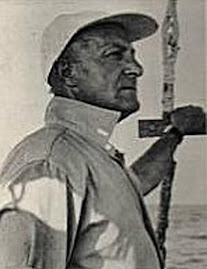
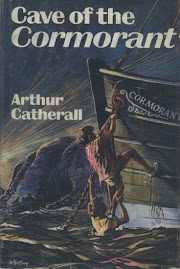

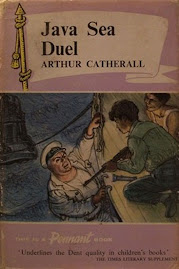

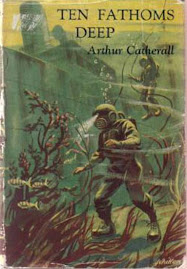
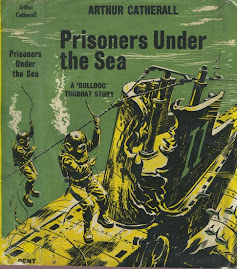
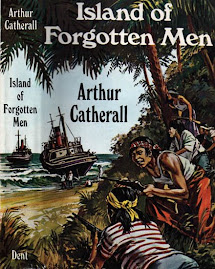
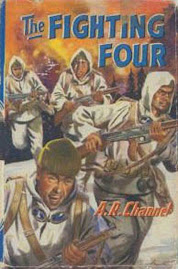


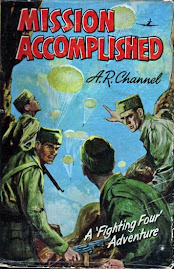
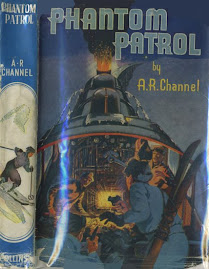
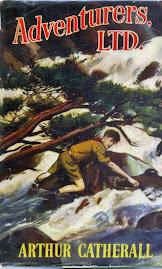
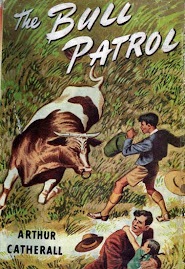
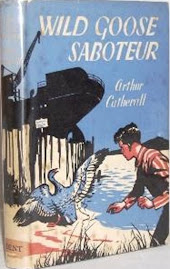
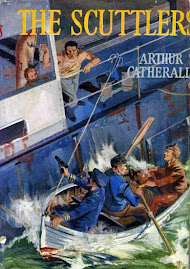
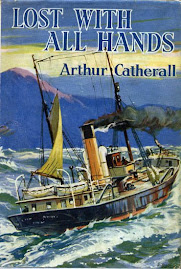
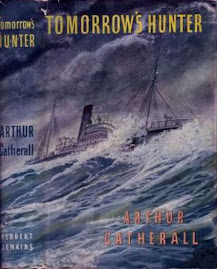
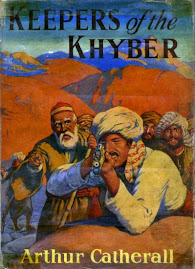
No comments:
Post a Comment